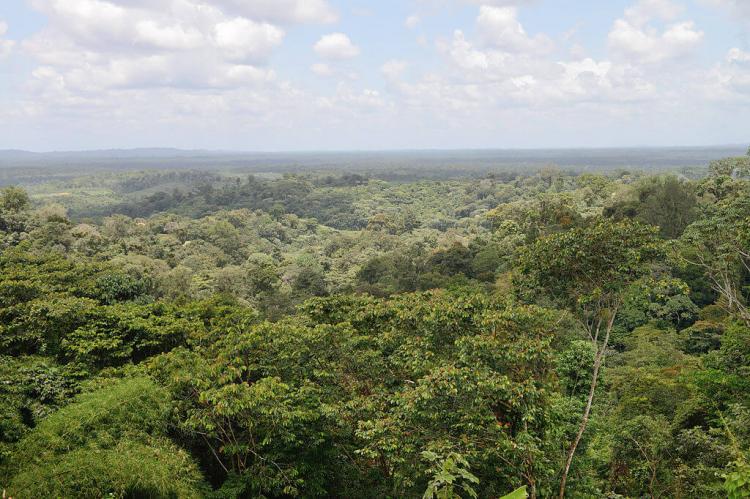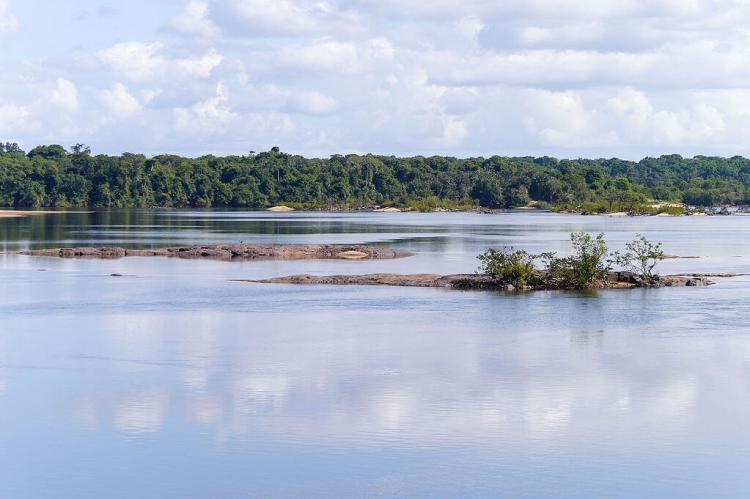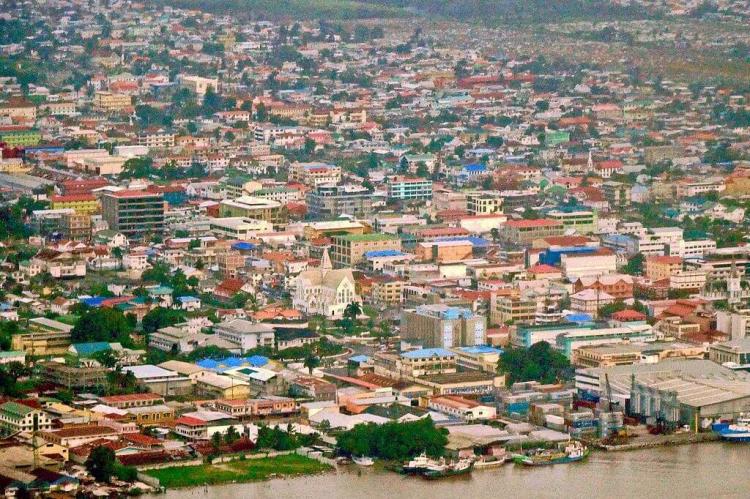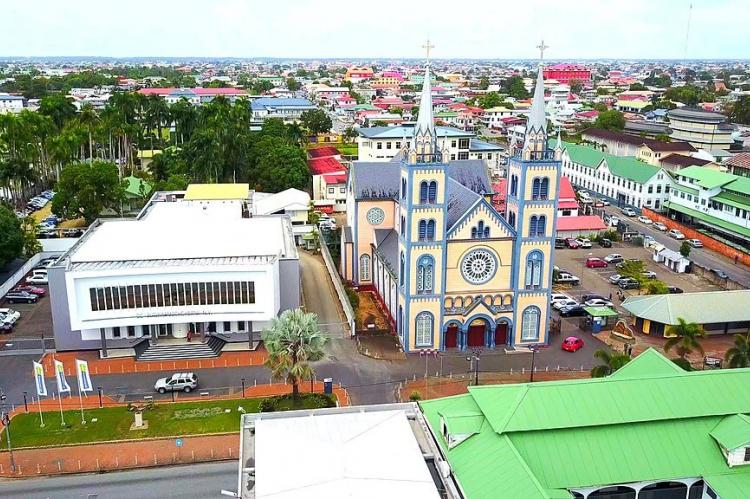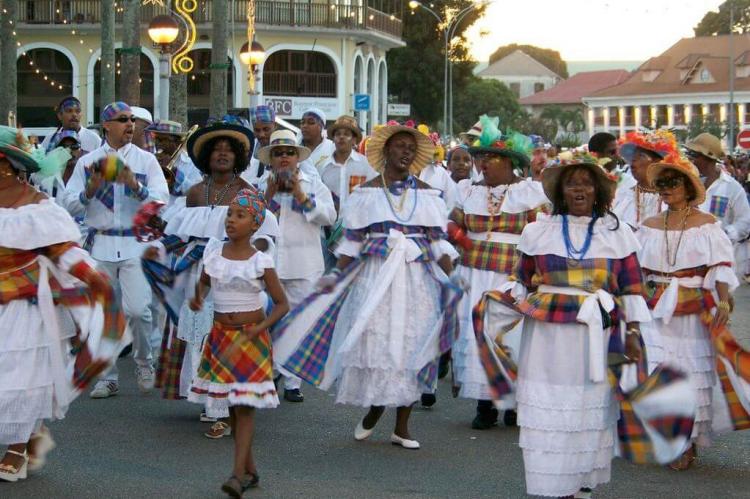Exploring the Guianas: Unveiling Caribbean South America
Located on the north-central coast of South America, the Guianas comprise three countries: French Guiana, Guyana, and Suriname. These countries boast untouched landscapes and centuries-old traditions, making them testaments to the resilience of their people and the beauty of their natural surroundings.
Exploring the Guianas: Unveiling Caribbean South America
Nestled along the north-central coast of South America lies an enchanting region awaiting exploration: the Guianas. Comprising French Guiana, Guyana, and Suriname, these territories form a vibrant tapestry of cultural diversity and ecological abundance, inviting adventurers to delve into their pristine landscapes and rich heritage. With landscapes seemingly untouched by the passage of time and a heritage steeped in centuries-old traditions, the Guianas serve as a testament to the resilience of their people and the awe-inspiring beauty of their natural surroundings.
In the broader context of South America, the Guianas are often regarded as part of Caribbean South America, a subregion that also encompasses the northern coastal regions of Colombia and Venezuela. Despite being geographically distinct from the Caribbean Sea, the Guianas maintain close connections with their Caribbean counterparts through cultural interchange, trade, and membership in regional organizations such as the Caribbean Community (CARICOM). This unique geographical position positions the Guianas as a vital link between continents and cultures, acting as a conduit between South America and the Caribbean, fostering cross-cultural exchange and collaboration.
Geographical Overview: Where Three Worlds Meet
The Guianas occupy a strategic and geographically diverse position on the northeastern shoulder of South America, acting as a bridge between the Atlantic Ocean and the Caribbean Sea to the north and the vast expanse of Brazil and Venezuela to the east, south, and west. This region spans approximately 468,800 square kilometers (181,000 square miles) and encompasses a landscape tapestry that captivates the imagination and stirs the soul. Dense rainforests, teeming with abundant flora and fauna, cloak much of the interior, while sprawling savannas stretch across vast expanses punctuated by towering termite mounds and solitary palm trees. Winding rivers meander through the heart of the Guianas, carving through the lush terrain and providing a lifeline for wildlife and human communities. Along the pristine coastlines, where the azure waters of the Atlantic meet the sandy shores, lies a haven of tranquility and natural beauty.
French Guiana, with its capital city of Cayenne, is the gateway to this enchanting region, nestled along the northeast coast. Here, colonial charm blends seamlessly with South American flair, as colorful Creole houses line the streets and bustling markets offer a tantalizing array of exotic fruits and spices. Further westward, Guyana and Suriname await exploration, each with distinct character and allure. With its capital city of Georgetown, Guyana exudes a sense of timeless elegance, with colonial-era buildings and stately mansions dotting the landscape. Suriname, home to the vibrant capital of Paramaribo, beckons with its eclectic mix of Dutch colonial architecture, bustling markets, and lively street life.
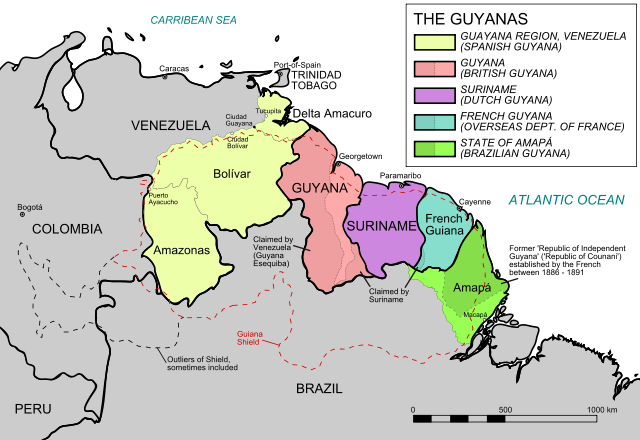
Political map of The Guianas, including the Venezuelan and Brazilian territories.
French Guiana: A Piece of France in South America
French Guiana, often called "France in South America," is a captivating fusion of European elegance and South American allure. As an overseas department and region of France, it offers visitors a unique blend of French culture amidst the breathtaking landscapes of the Amazon rainforest. At the heart of this enchanting territory lies the vibrant capital city of Cayenne, a melting pot of colonial architecture, bustling markets, and a rich culinary tradition that pays homage to its French heritage.
Wandering through the streets of Cayenne, one is transported back to an era of colonial grandeur, where ornate facades and wrought-iron balconies adorn the buildings, reminiscent of a bygone era. The city's historic landmarks, such as the Cathedral of Saint-Sauveur and the Fort Cépérou, bear witness to French Guiana's storied past and serve as a testament to its enduring cultural legacy.
Beyond the urban landscape, French Guiana beckons adventurers to explore its untamed wilderness, where vast expanses of pristine rainforest stretch as far as the eye can see. Among these natural wonders lies the iconic Guiana Amazonian Park, a UNESCO World Heritage Site renowned for its unparalleled biodiversity and rich tapestry of indigenous communities. Here, amidst the lush green canopy, visitors can embark on immersive eco-tours, trekking through ancient trails and encountering a dizzying array of plant and animal species found nowhere else on Earth.
But French Guiana's allure extends beyond its natural beauty, as it serves as a living laboratory for scientific research and space exploration. The Guiana Space Centre, located near the town of Kourou, stands as one of the world's leading spaceports, launching satellites and spacecraft into orbit with unparalleled precision. Visitors to the center can witness the cutting-edge technology and groundbreaking discoveries that have cemented French Guiana's reputation as a global hub for space exploration.
Guyana: A Tapestry of Cultures and Contrasts
Guyana, a land of cultural richness and natural splendor, emerges as a vibrant tapestry of diversity and contrasts. Formerly known as British Guiana, Guyana proudly declared its independence in 1966, marking a pivotal moment in its history and paving the way for its emergence onto the global stage. At the heart of this enchanting nation lies the bustling capital city of Georgetown, a melting pot of cultures where Afro-Guyanese, Indo-Guyanese, and indigenous communities converge to create a kaleidoscope of traditions and customs. Walking through the streets of Georgetown, one can feel the pulse of Guyanese life, from the rhythmic beats of calypso music to the tantalizing aromas wafting from street food stalls, each offering a glimpse into the rich tapestry of Guyanese identity.
But beyond the urban hustle and bustle, Guyana's interior beckons with its untamed wilderness and awe-inspiring landscapes. A world of adventure is waiting to be explored amidst the dense rainforests and meandering rivers. The majestic Kaieteur Falls, one of the tallest single-drop waterfalls in the world, captivates visitors with its thundering cascade and mist-shrouded cliffs, offering a glimpse into the raw power of nature. Further afield, the vast Rupununi Savannahs stretch to the horizon, where herds of wild animals roam freely, and ancient traditions endure.
For the adventurous traveler, Guyana offers unparalleled opportunities to immerse oneself in nature and discover the secrets of its untamed wilderness. Whether trekking through the rainforest in search of elusive wildlife, paddling down remote rivers in search of hidden waterfalls, or camping under the stars in the heart of the savannah, the possibilities for exploration are endless. But amidst the rugged beauty of its landscapes lies a deep connection to the land and its people, where indigenous communities continue to live in harmony with nature, preserving age-old traditions passed down through generations.
Suriname: Where Dutch Colonial Charm Meets Tropical Splendor
Suriname, a jewel of South America where Dutch colonial charm intertwines with tropical splendor, invites visitors to explore its rich cultural heritage and unspoiled natural landscapes. Formerly known as Dutch Guiana, Suriname's history is deeply rooted in centuries of Dutch colonization, which has left an indelible mark on its culture and architecture. At the heart of this enchanting nation lies the capital city of Paramaribo, a UNESCO World Heritage Site renowned for its well-preserved colonial architecture and vibrant street life.
Wandering through the streets of Paramaribo, one is transported back in time to an era of Dutch colonial rule, where ornate Dutch-style buildings line the waterfront and cobblestone streets lead to hidden courtyards and historic landmarks. The iconic wooden structures, known as "Dutch colonial houses," are a testament to Suriname's colonial past and serve as a backdrop for the city's bustling markets, lively cafes, and colorful festivals. Amidst the hustle and bustle of Paramaribo's streets, visitors can immerse themselves in the vibrant street life, where traditional music fills the air and the aromas of exotic spices tempt the senses.
Beyond the city limits, Suriname's interior beckons with its untamed wilderness and breathtaking natural beauty. A world of adventure awaits amidst the dense rainforests and winding rivers. The vast expanses of pristine rainforest are home to abundant wildlife, from colorful birds and elusive jaguars to playful river otters and giant anteaters. Adventurous travelers can embark on jungle treks, canoeing expeditions, and wildlife safaris, immersing themselves in the sights and sounds of the Surinamese wilderness.
For those seeking tranquility and relaxation, Suriname offers secluded eco-lodges and riverfront resorts where guests can unwind amidst the sounds of nature and enjoy breathtaking views of the surrounding landscapes. Whether exploring the colonial streets of Paramaribo or venturing into the heart of the rainforest, Suriname promises an unforgettable journey filled with adventure, discovery, and cultural immersion.
History: Tracing the Footsteps of Explorers and Colonizers
The history of the Guianas is a captivating tale of exploration, conquest, and cultural resilience, weaving together the diverse narratives of indigenous peoples and European colonizers. Long before the arrival of European explorers, the Guianas were inhabited by indigenous Arawakan-speaking groups whose ancestors forged a deep connection with the land and its bountiful resources. Today, their descendants continue to occupy the region, preserving age-old traditions and maintaining a solid cultural identity intricately woven into Guianese society's fabric.
European exploration of the Guianas began in earnest in the late 15th century, spurred by the quest for riches and the promise of new lands to conquer. In 1498, Christopher Columbus sighted the coast of the Guianas during his third voyage to the Americas, laying claim to these uncharted territories in the name of the Spanish crown. However, it was not until the early 17th century that sustained European interest in the region emerged, as the Dutch, British, and French vied for control of its valuable resources and strategic position along the coast.
The Dutch were among the first European powers to establish a presence in the Guianas, laying the foundation for their colonies by establishing trading posts and sugar plantations along the fertile riverbanks. British settlers followed suit, establishing their foothold in the region and claiming vast tracts of land for agricultural development. Meanwhile, the French made their forays into the Guianas, seeking to exploit its natural resources and expand their colonial empire in the New World.
The Guianas became battlegrounds for imperial rivalries throughout the following centuries, as European powers fought to control its lucrative sugar trade and strategic ports. Wars were waged, alliances were forged and broken, and countless lives were lost in pursuing power and wealth. Yet amidst the chaos of conquest and colonization, indigenous communities persisted, adapting to the changing tides of history and preserving their cultural heritage against all odds.
Ecology: Guardians of the Rainforest
The Guianas are guardians of one of the world's most precious natural treasures: the ecoregion of the Guianan moist forests. This ecological marvel, spanning expansive stretches of unspoiled wilderness, is renowned as a biodiversity hotspot, boasting an unparalleled abundance of plant and animal species found nowhere else on Earth. From the majestic jaguars prowling through the dense undergrowth to the playful antics of giant river otters in pristine waterways, the Guianas offer a sanctuary for wildlife enthusiasts and conservationists alike, beckoning them to explore its hidden wonders and unravel the mysteries of its ancient rainforests.
Within the lush green canopy of the Guianan rainforest, a kaleidoscope of life thrives in harmony with its surroundings. Towering trees, draped in a tapestry of epiphytes and lianas, provide shelter and sustenance for a myriad of species. At the same time, crystal-clear rivers and streams teem with aquatic life, from colorful fish to elusive freshwater dolphins. Above, the canopy resonates with the calls of exotic birds, their vibrant plumage flashing amidst the emerald foliage, while shy primates swing gracefully through the treetops, their keen eyes scanning the forest floor for signs of danger.
However, amidst the breathtaking beauty of the Guianan rainforest lies a sobering reality: the looming threat of deforestation, mining, and other human activities. As demand for timber, agricultural land, and mineral resources continues to rise, vast swathes of pristine wilderness are being lost at an alarming rate, jeopardizing the delicate balance of this fragile ecosystem. The Guianas stand at a crossroads, facing an uncertain future where the survival of countless plant and animal species hangs in the balance.
Faced with these challenges, sustainable conservation efforts are urgently needed to protect the irreplaceable treasure of the Guianan rainforest. Collaborative initiatives between governments, conservation organizations, and local communities are essential to safeguarding the region's biodiversity and ensuring the long-term viability of its ecosystems. By promoting responsible land management practices, supporting indigenous rights, and fostering environmental education and awareness, we can work together to preserve the ecological integrity of the Guianas for generations to come.
Conclusion: Discovering the Guianas
The Guianas are a region of unmatched allure, boasting breathtaking landscapes, cultural diversity, and ecological significance. From French Guiana's colonial elegance to Guyana's vibrant tapestry and the tropical paradise of Suriname, these territories promise a wealth of experiences for daring adventurers. As custodians of the rainforest and custodians of a vibrant cultural legacy, the Guianas offer a gateway to uncovering the mysteries of South America's northeastern frontier, beckoning travelers to embark on a voyage of exploration, revelation, and excitement.

